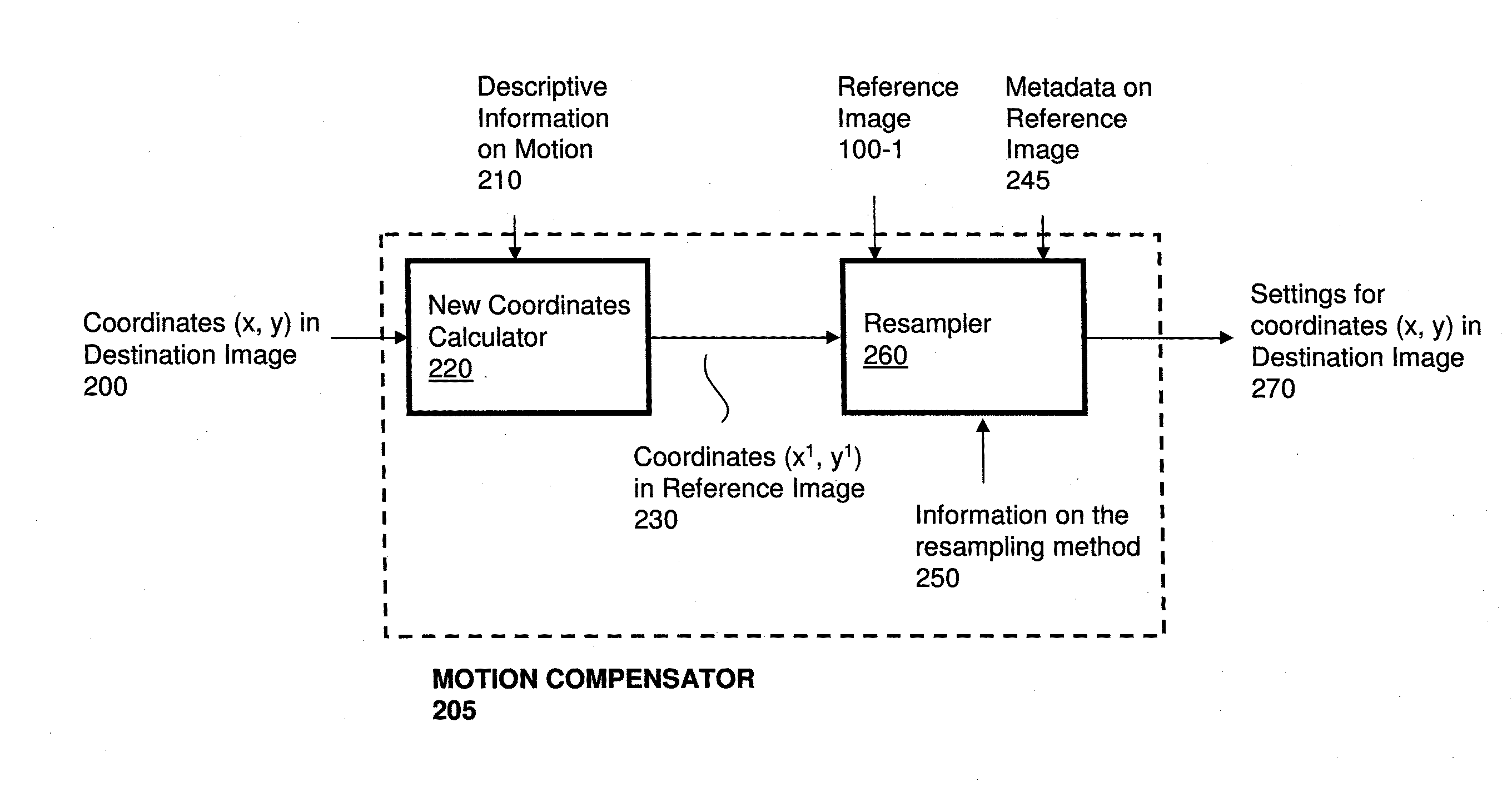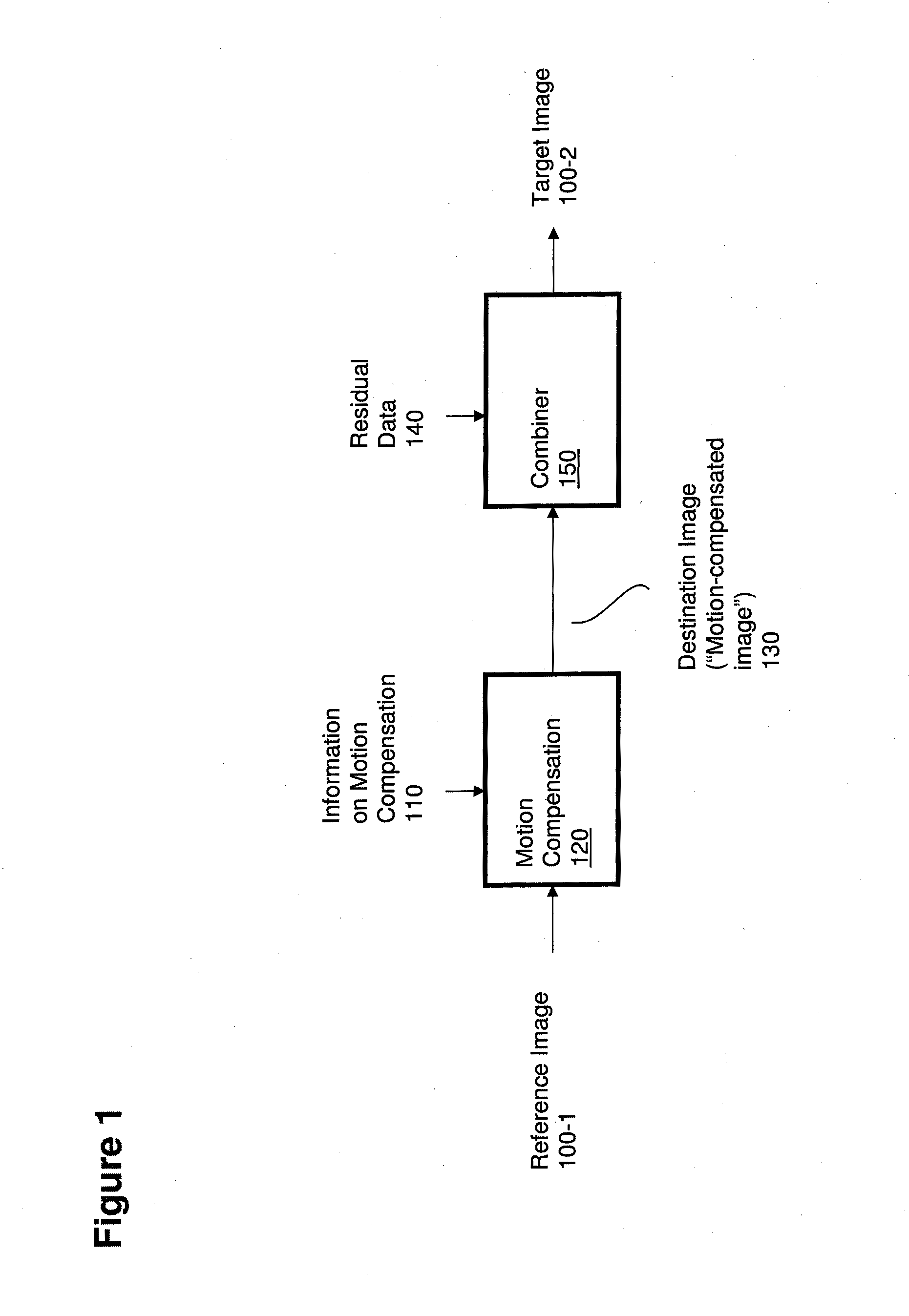Motion compensation and motion estimation leveraging a continuous coordinate system
a continuous coordinate system and motion compensation technology, applied in the field of motion compensation and motion estimation levers, can solve the problems of inability to generate and process super high-resolution reference images, requiring a higher amount of memory on the decoder side, and undesirable effects, and achieve the effect of higher precision
- Summary
- Abstract
- Description
- Claims
- Application Information
AI Technical Summary
Benefits of technology
Problems solved by technology
Method used
Image
Examples
Embodiment Construction
[0098]Methods illustrated herein are suitable for any type of multi-dimensional signals, including without limitation sound signals, multichannel sound signals, pictures, two-dimensional images, video signals, multi-view video signals, 3D video signals, volumetric signals, volumetric video signals, medical imaging signals, signals with more than four dimensions, etc.
[0099]For simplicity, along the description the illustrated embodiments usually adopt the use case of motion zones used in the context of motion compensation operations for the encoding and decoding of video sequences, i.e., time-based signals consisting of a sequence of 2D images (commonly called “frames”, or “fields” in the case of interlaced video signals), with each element (in such non-limiting example case typically referred to as “pixel”) being characterized by a set of color settings in a suitable color space (e.g., YUV, RGB, HSV, etc.). Different color planes (e.g., the luminance-Y plane and the two chrominance—...
PUM
 Login to View More
Login to View More Abstract
Description
Claims
Application Information
 Login to View More
Login to View More - R&D
- Intellectual Property
- Life Sciences
- Materials
- Tech Scout
- Unparalleled Data Quality
- Higher Quality Content
- 60% Fewer Hallucinations
Browse by: Latest US Patents, China's latest patents, Technical Efficacy Thesaurus, Application Domain, Technology Topic, Popular Technical Reports.
© 2025 PatSnap. All rights reserved.Legal|Privacy policy|Modern Slavery Act Transparency Statement|Sitemap|About US| Contact US: help@patsnap.com



